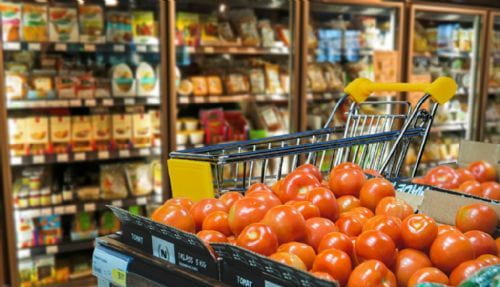How an imitation supermarket is helping to stabilise the National Grid
25 June 2019
Researchers have built an imitation supermarket at the University of Lincoln, UK, in a bid to tackle the impact of mass refrigeration on the UK’s carbon footprint. The Refrigeration Research Centre (RRC) is the first facility of its kind in the world. Harnessing cutting edge technology, it precisely models the essential dynamics of a typical […]

Researchers have built an imitation supermarket at the University of Lincoln, UK, in a bid to tackle the impact of mass refrigeration on the UK’s carbon footprint.
The Refrigeration Research Centre (RRC) is the first facility of its kind in the world. Harnessing cutting edge technology, it precisely models the essential dynamics of a typical supermarket and is the location for pioneering research being carried out in collaboration with global retailer Tesco and specialist Internet of Things company IMS Evolve.
Scientists and engineers are currently working there to develop and test innovative refrigeration systems that could significantly reduce the environmental impact of the food and drink retail industry and support our strained National Grid.
Mass refrigeration is responsible for around 12% of the UK’s carbon emissions. With hundreds of thousands of commercial refrigeration systems across the UK, they place significant pressure on the National Grid and represent up to one third of a typical retailer’s energy cost. The drive towards low carbon economies also means that the UK National Grid is becoming progressively more unstable, as renewable and decentralised energy sources such as wind and solar PV are less constant than traditional fuel sources.
The National Grid has recently placed more emphasis on the development of new mechanisms to manage electricity output at peak times, as part of a concept called ‘Demand Side Response’ (DSR). DSR aims to stabilise the grid by managing demand and using power more intelligently rather than simply generating more electricity to meet short periods of huge demand, and in turn growing the country’s carbon footprint.
This new research – funded by Innovate UK as part of a Knowledge Transfer Network – by the University of Lincoln, IMS Evolve, Tesco Stores Ltd and The Grimsby Institute, explores how to modify refrigeration control in proportion to the available energy on the National Grid while also optimising food temperature control.
Working at the RRC as part of the two-year project, the researchers carried out a major industrial demonstration applying DSR to food retailing networks, using Internet of Things technology, and their latest findings are published in the major academic journal, Applied Energy.
Professor Simon Pearson, Director of the Lincoln Institute for Agri-food Technology (LIAT), said: “The National Grid operates with a very narrow generating margin of 5%, and an increasing input of renewable generation systems that do not provide consistent outputs. Stabilising the Grid is a strategic national priority, which is addressed not just from the supply side of energy but from stabilising demand too – so-called Demand Side Responses (DSR).
“Maintaining a reliable and efficient network of commercial refrigeration systems is absolutely imperative, as supermarkets use them not only to keep our food and drink chilled but also to prolong the shelf life of produce. Currently, control systems use very static control temperatures, but this project is developing algorithms to dynamically control refrigeration temperatures.
“Successfully integrating food refrigeration systems into DSR mechanisms would have national and internationally relevant impact, and our research has shown that this can be done while controlling food quality and temperature control limits.”
Edward Porter, Director of IoT, IMS Evolve, explained: “Ambitious UK targets which could see up to nine million electric vehicles on the roads of Britain by 2030, coupled with the rapid adoption of data hungry machines and services, are driving a critical need to explore and adopt ways that the National Grid can use electricity more intelligently. Our pioneering retail refrigeration research alongside the University of Lincoln and Tesco has proven that it is possible to ensure the safety and optimise the quality of refrigerated produce whilst using demand side response to make a significant impact to an area which makes up almost a third of a retailer’s costs and is responsible for 12 percent of the UK’s carbon emissions.
“As the UK works towards meeting its energy and emissions targets, together we’re showing that technology can provide the capacity and flexibility to operate a nationwide electricity system in a far smarter way.”
The new paper in Applied Energy reveals the results of testing different algorithms that control retail refrigeration systems in the event of a surge in demand which can’t be met by the National Grid.
The researchers from LIAT and the University of Lincoln’s School of Engineering established complex algorithms taking into account a number of key criteria, including estimation of the mass and thermal transfer rate of food in each refrigerator and numerical weather predictions. In addition the team worked with IMS Evolve who are Internet of Things specialists and optimised the considerable IT architecture and data flows needed to handle the enormous data scale.
Filippo Chiettini, Energy Manager at Tesco Stores Limited, said: “This project gave us a valuable insight into the safe boundaries of operations of our refrigeration systems. It allowed us to understand what degree of flexibility can be safely exploited for services like DSR. It also enriched our general understanding of how different types of food behave within different areas of a refrigerated cabinet.”
The new academic paper is available to read in full online.
